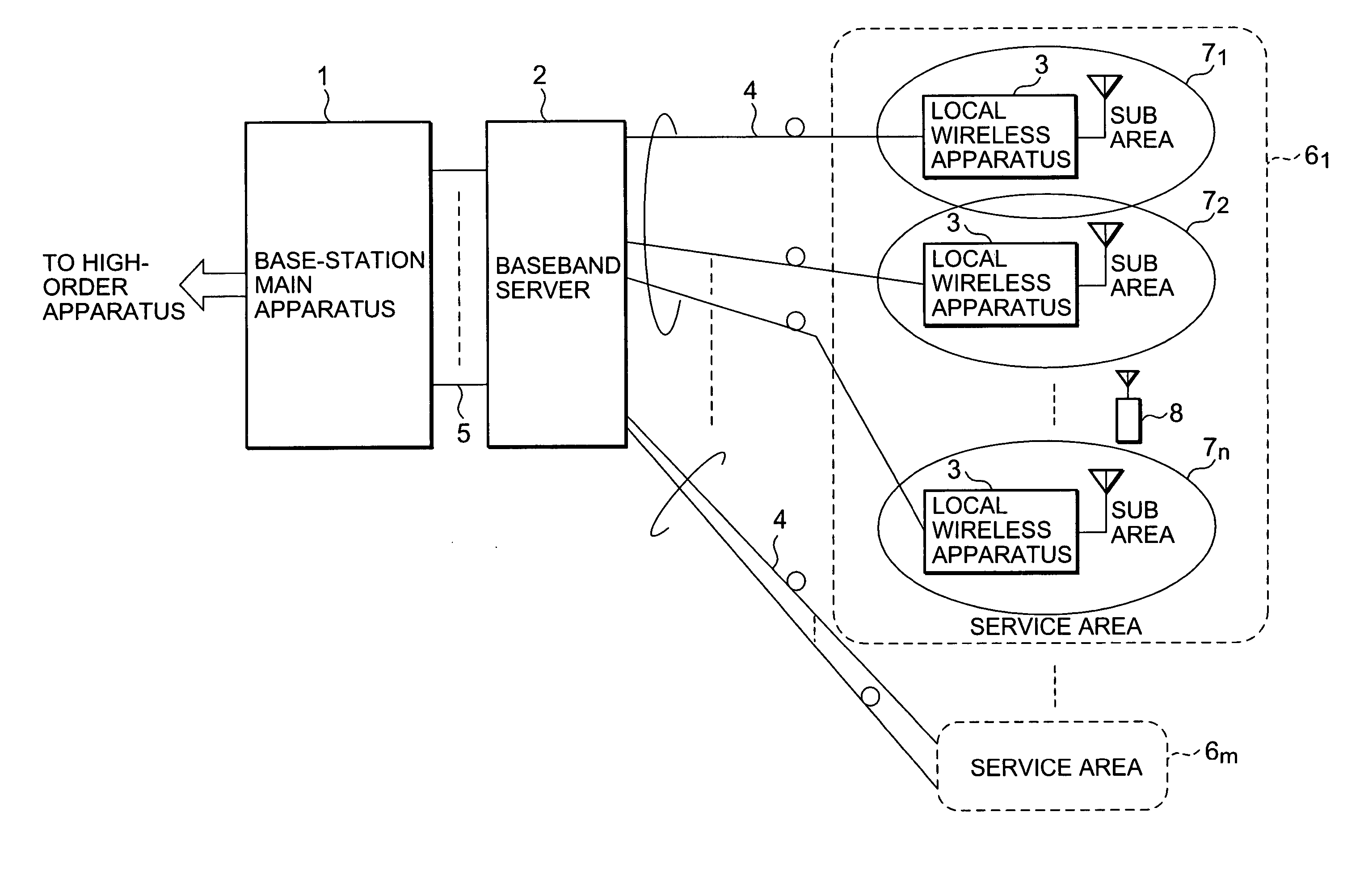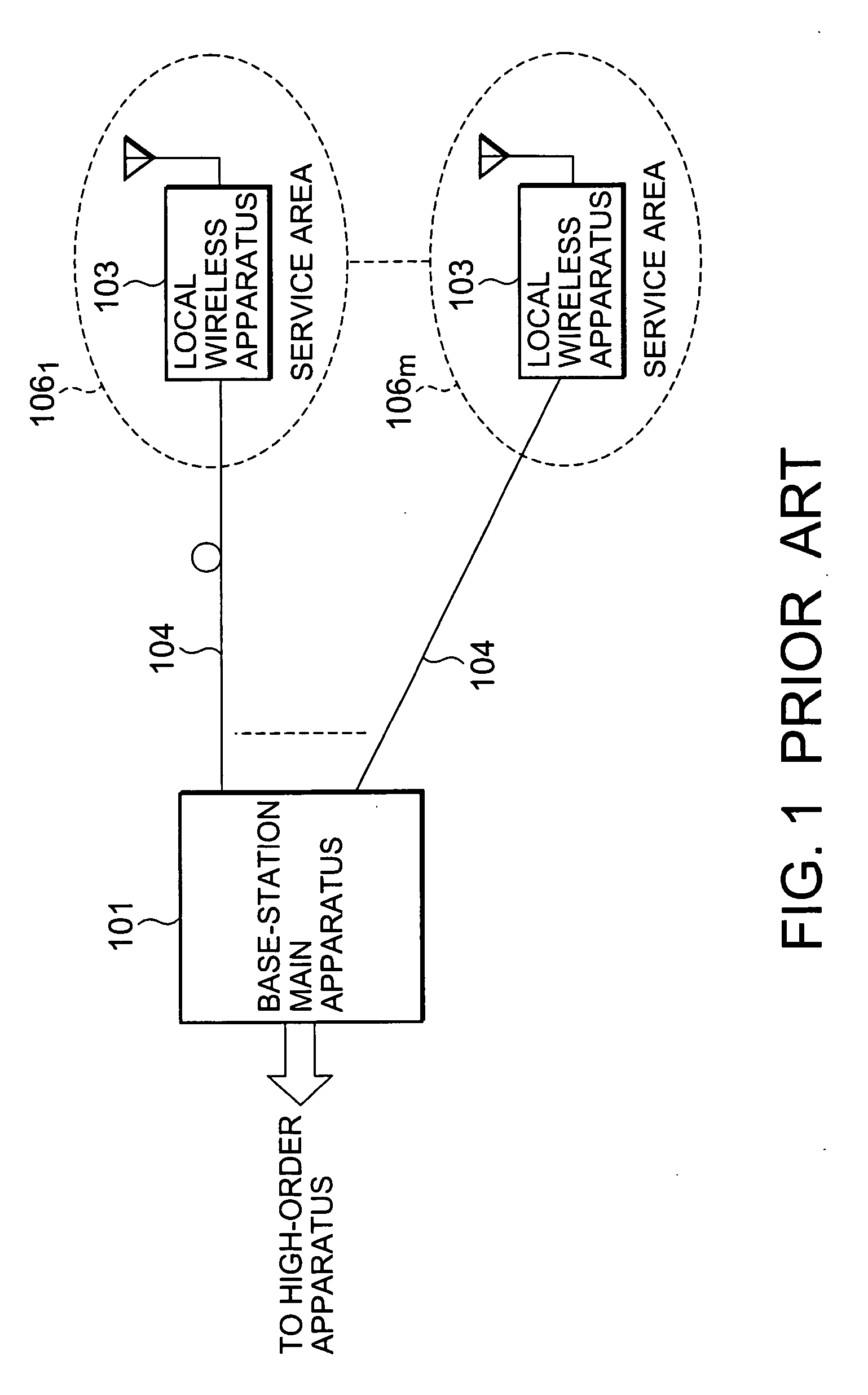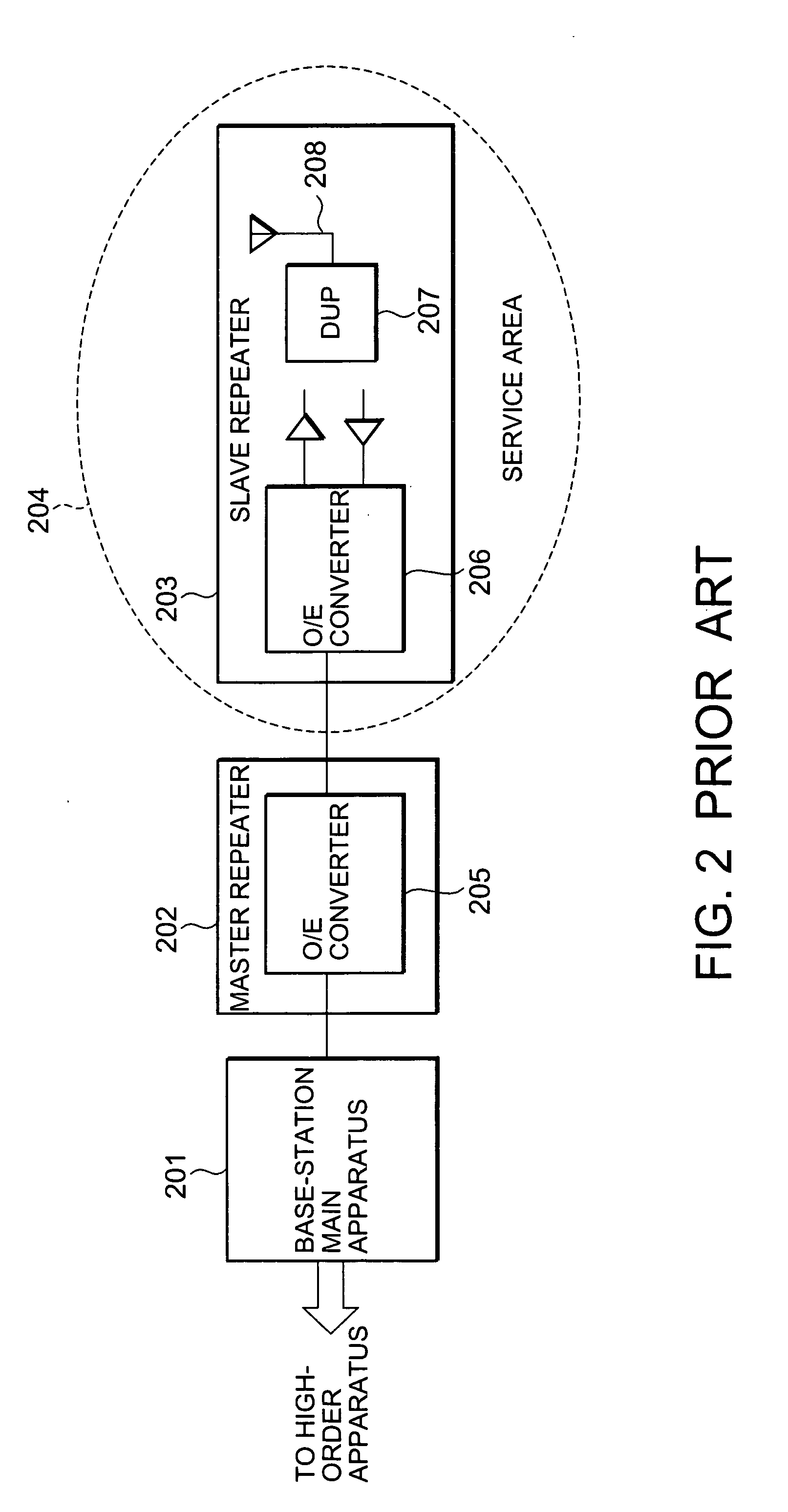Wireless base station apparatus
a base station and wireless technology, applied in the field of wireless base station systems, can solve the problems of increasing the complexity and large area of the apparatus, the limited reception sensitivity of the slave repeater b, and the inability to cover the entire area, so as to reduce the degradation caused by the o/e converter, prevent the creation, and expand the service area of the wireless base station system. the effect of relative eas
- Summary
- Abstract
- Description
- Claims
- Application Information
AI Technical Summary
Benefits of technology
Problems solved by technology
Method used
Image
Examples
Embodiment Construction
[0027] The present invention will now be described with reference to the accompanying drawings.
[0028]FIG. 3 is a block diagram showing one example of the configuration of a wireless base-station system of the present invention. FIG. 4 is block diagram showing the configuration a base-station main apparatus, a base band server, and local wireless apparatuses shown in FIG. 3.
[0029] As shown in FIG. 3, the wireless base-station system of the present invention includes a base-station main apparatus 1 for processing baseband signals for mobile terminal devices 8, multiple local wireless apparatuses 3, and a baseband server 2. The multiple local wireless apparatuses 3 performs wireless communication with each mobile terminal device 8 and transmitting / receiving baseband signals for each mobile terminal device 8 to / from the base-station main apparatus 1. The baseband server 2 relays the baseband signals transmitted / received between the base-station main apparatus 1 and the local wireless ...
PUM
 Login to View More
Login to View More Abstract
Description
Claims
Application Information
 Login to View More
Login to View More - R&D
- Intellectual Property
- Life Sciences
- Materials
- Tech Scout
- Unparalleled Data Quality
- Higher Quality Content
- 60% Fewer Hallucinations
Browse by: Latest US Patents, China's latest patents, Technical Efficacy Thesaurus, Application Domain, Technology Topic, Popular Technical Reports.
© 2025 PatSnap. All rights reserved.Legal|Privacy policy|Modern Slavery Act Transparency Statement|Sitemap|About US| Contact US: help@patsnap.com



